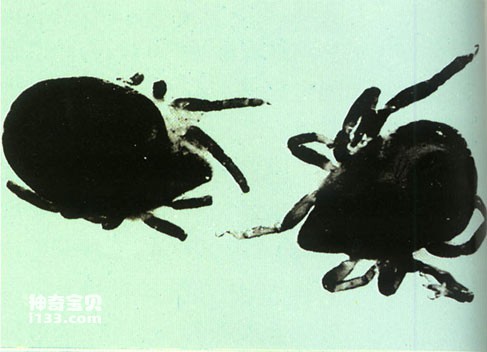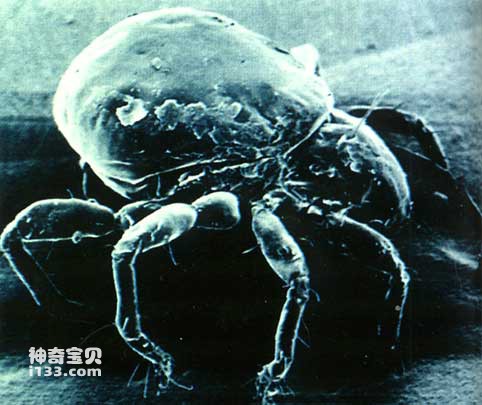Although there are more than 150 species of land animals in Antarctica, most of them are parasites on seabirds and sea animals and are not real land animals. The real Antarctic land animals include insects and arachnids, which are indigenous inhabitants of the Antarctic continent, such as ticks, mites, spiny tail worms and midges.
The mite, also called the wingless Antarctic fly, is the largest land animal in the Antarctic continent, with a body length of only 2.5 to 3 mm. It is distributed in the narrow zone between 64o and 65o30' south latitude on both sides of the Antarctic Peninsula. It lives by eating mosses, lichens and other detritus.

land spider
Apical tailworms (also called springtails) and mites are the most widely distributed in the Antarctic continent, from the coast to the plateau at an altitude of 2,000 meters, and even as far inland as 84o south latitude. Sharptail worms are mostly found on rock surfaces where lichens grow. They often live together with lichens. They are sometimes found under rocks or in small gravel crevices, but they are uncommon. Mites are more common under rocks than on rock surfaces. They mainly live with moss. Mites can tolerate cooler temperatures. Fusarium mites of the family Cryptoonychus are Antarctic mites that live together with algae. They feed on algae and can live in frozen sand.
In addition, rare species of flatworms, roundworms and other crustaceans such as water fleas grow in freshwater ponds, streams and lakes in Antarctica. There are tardigrades in mossy shoals and freshwater ponds. They are only 0.1 to 0.8 mm long, reddish-brown, covered in cuticles, have tentacles, short legs, and lay eggs. They feed on moss and blue-green algae. For food.

land midge
Chinese biologists discovered a kind of spider in the crevices or under the rocks near the Great Wall Station in China's Antarctica. Its body is several millimeters long, pink in color, soft and transparent, and can break when touched. It usually grows in On rocks with lichens, they may live on lichens.

Tick on moss
Although the Antarctic continent has the above-mentioned indigenous terrestrial animals and plants, the population and quantity of animals and plants are pitifully small compared with other continents on the earth. There are many more land animals in the Arctic than in Antarctica. There are a large number of insects, land birds and mammals in the Arctic, such as hares, foxes, wolves, bears, reindeer and musk oxen. Fresh water contains fish and amphibians. However, it is not easy for terrestrial creatures in Antarctica, whether animals or plants, to survive in extremely harsh environments. They must fight and contend with the dangerous environment, and exercise and develop the ability to adapt to harsh environments in order to survive. Go down and breed.
animal tags:
We created this article in conjunction with AI technology, then made sure it was fact-checked and edited by a Animals Top editor.